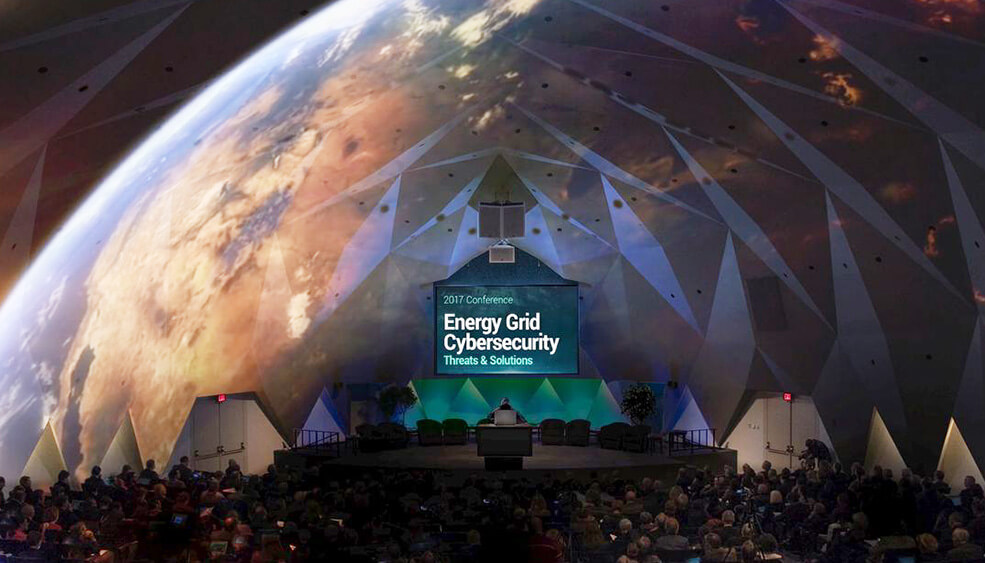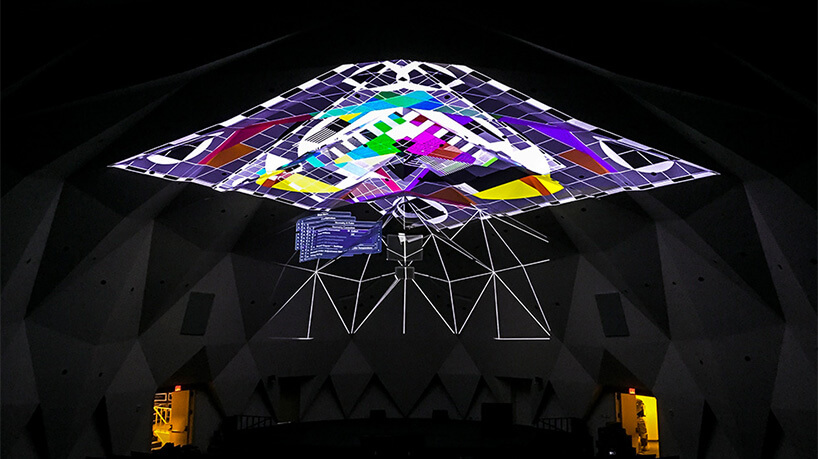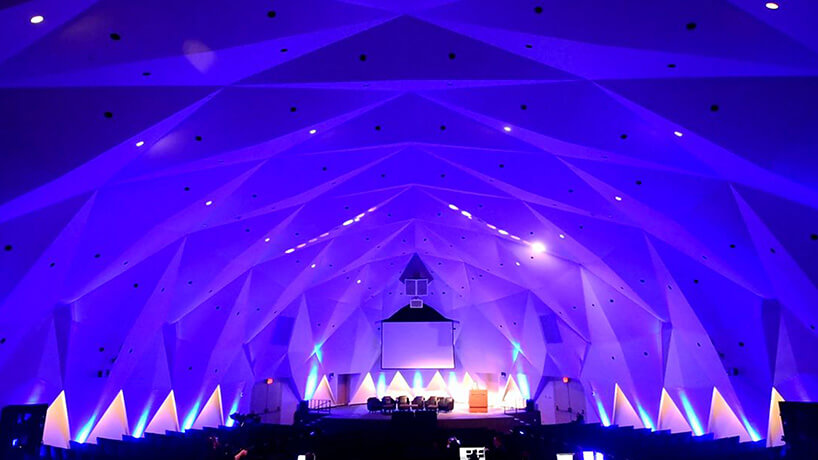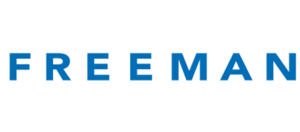When organizers of an energy grid cybersecurity event wanted to drive home the risk of an attack on the U.S. power grid, the production team at Freeman created an eerily realistic experience.
When Clay Cook, client solutions director, Freeman, Lisa VanRosendale, senior vice president of client development for FreemanXP, and their colleagues began thinking about how to design the attendee experience for The Energy Grid Cybersecurity: Threats & Solutions Conference, they focused on creating an unforgettable impression from the first minute of the program. “Millennials made up a big portion of the audience,” Cook told PCMA. “And we wanted to figure out how to capture their attention from the very beginning.”
The event, co-hosted by the Siebel Scholars Foundation and Siebel Energy Institute in Washington, D.C., attracted approximately 400 scholars from the Siebel Scholars Foundation, government leaders, energy researchers, and cybersecurity experts from around the world. The audience had studied the dangers of cyber warfare — the massive attack in Ukraine was evidence — but there is a big difference between knowing about something and actually experiencing it. So Cook and the rest of the Freeman team did some homework to familiarize themselves with the cyber warfare conversation. They read Ted Koppel’s Lights Out, which offers an in-depth perspective on the potential catastrophic impact of an attack on America’s power grid. “Every person on the production team read the book,” Cook said. “It paints a very serious picture of the damage. Basically, 90 percent of the country dies within the first year.”
“Eliminating” 90 Percent of the Audience
Cook and the team decided to do something unconventional: They needed to “kill off” the vast majority of the audience. To follow Koppel’s lead, they recognized an opportunity to simulate the attack — and the disappearing population — using LED wristbands. “We wanted to tell the story of the attack by using the bracelets to indicate each individual’s lifespan,” Cook said.
It’s a bold idea that created some understandable concerns for Thomas Siebel, the founder of the software company C3IoT and the mind behind the foundation. “I told him, if you really want me to create goosebumps and you really want to impact change, then I have to kill them,” VanRosendale told Convene earlier this year. “That was friction. I took him by surprise. He agreed, but he was uncomfortable with the agreement.”

Just as a real attack would catch citizens by surprise, the concept kept attendees in the dark — before the lights actually started to go dark. “They had no idea it would take place,” Cook said. “Before attendees left the hotel, they received these wristbands with instructions to wear them.”
When they arrived at the National Academy of the Sciences, the wristbands connected with towers that broadcast signals to keep them blinking in a heartbeat-like rhythm. As the audience lit up, the ceiling illuminated, too, with a 3D-projected map of the U.S. and a hacker breaking down the national energy grid. Instead of a standard welcome-to-the-conference opening, the lights went down, and a video cued them in to the simulation. A countdown clock tracked the days of the year as wristbands went off to signify deaths due to lack of energy resources.
“Throughout the opening segment, you heard reactions of the people who were excited to still be alive,” Cook said. “It really drove home the dangers of a lack of preparedness for this kind of attack on a very personal level.”
Those reactions helped transform Siebel’s initial uncertainties into an appreciation for such a daring opening. “He was so happy with the outcome because it did exactly what he wanted to do,” VanRosendale — who earned a nomination for PCMA’s Event Designer of the Year for her work on the event — said. “It got everybody to the point of, ‘Now it matters to me. I’m in it. Let’s talk about this.”

Preparing for the Attack
The opening segment lasted for under three minutes but designing the 3D projection and placing the towers required more time and attention to detail. Approximately eight weeks before the conference, Cook collaborated with another Freeman department that focuses on conducting laser scans to map a range of convention center facilities throughout the country. The surveying method is called Lidar, and it delivers a much more valuable model of an environment than a typical CAD approach. “We’ve used it to map the face of buildings and the interior of buildings to understand the canvas we’re working on,” Cook said. “
For the National Academy of the Sciences, they spent a full day scanning the space and managed to get to granular level where they could see the bumps in the paint in the wall. “The venue was ideal,” Cook said. “That was a key ingredient for the success. It was a geodesic dome that was practically begging for this kind of use.”
Wearables Only Work When They Fit
The experience did more than capture attention during the program. It did what any powerful face-to-face gathering should do: It left the audience wanting more. Post-event survey results showed that 100 percent of participants would attend another Siebel Scholars Foundation Conference.
The example was a success for attendees, the organization, and Freeman. It won IAEE’s award for Most Innovative Use of Technology Under 75,000 Square Feet. However, Cook said that wearables and other emerging technologies are not the ultimate ingredient for driving results.
“I don’t advocate for the use of technology for technology’s sake,” Cook said. “It’s important to identify the goal you’re trying to achieve. That doesn’t always mean that we have to use the latest and greatest features. It means that we have to tell a story.”
Interested in more of the story from the rest of the event? Check out the full Convene feature.
Click to learn about more of Freeman’s recent success stories. Meeting professionals can experience the company’s creative brainpower in action on the main stage at 2019 PCMA Convening Leaders in Pittsburgh.


